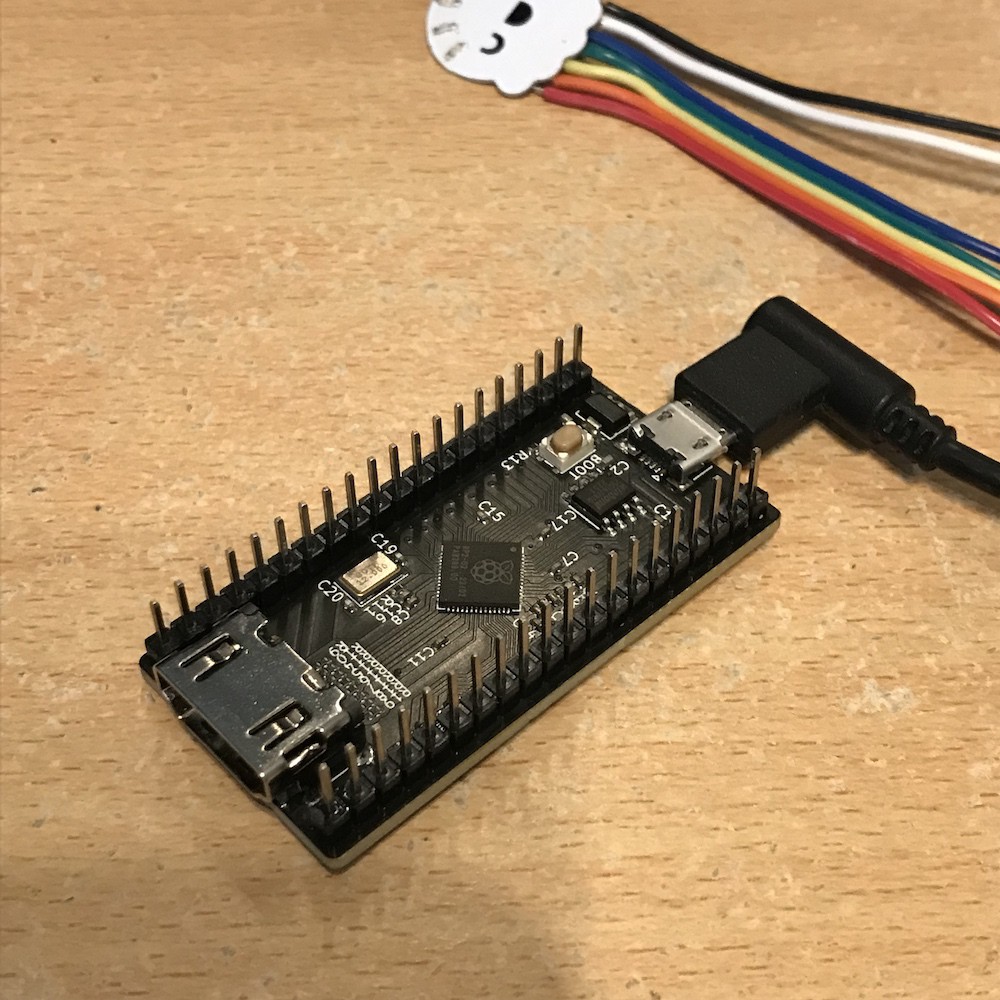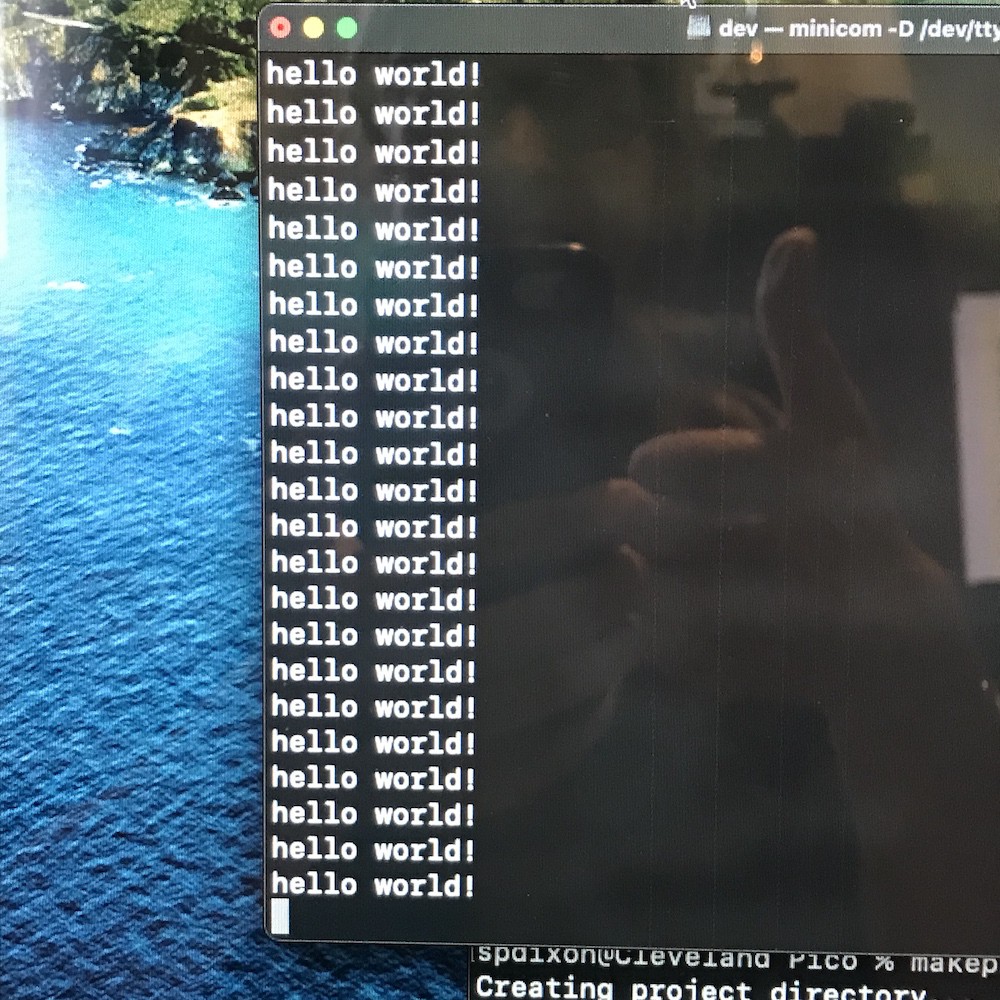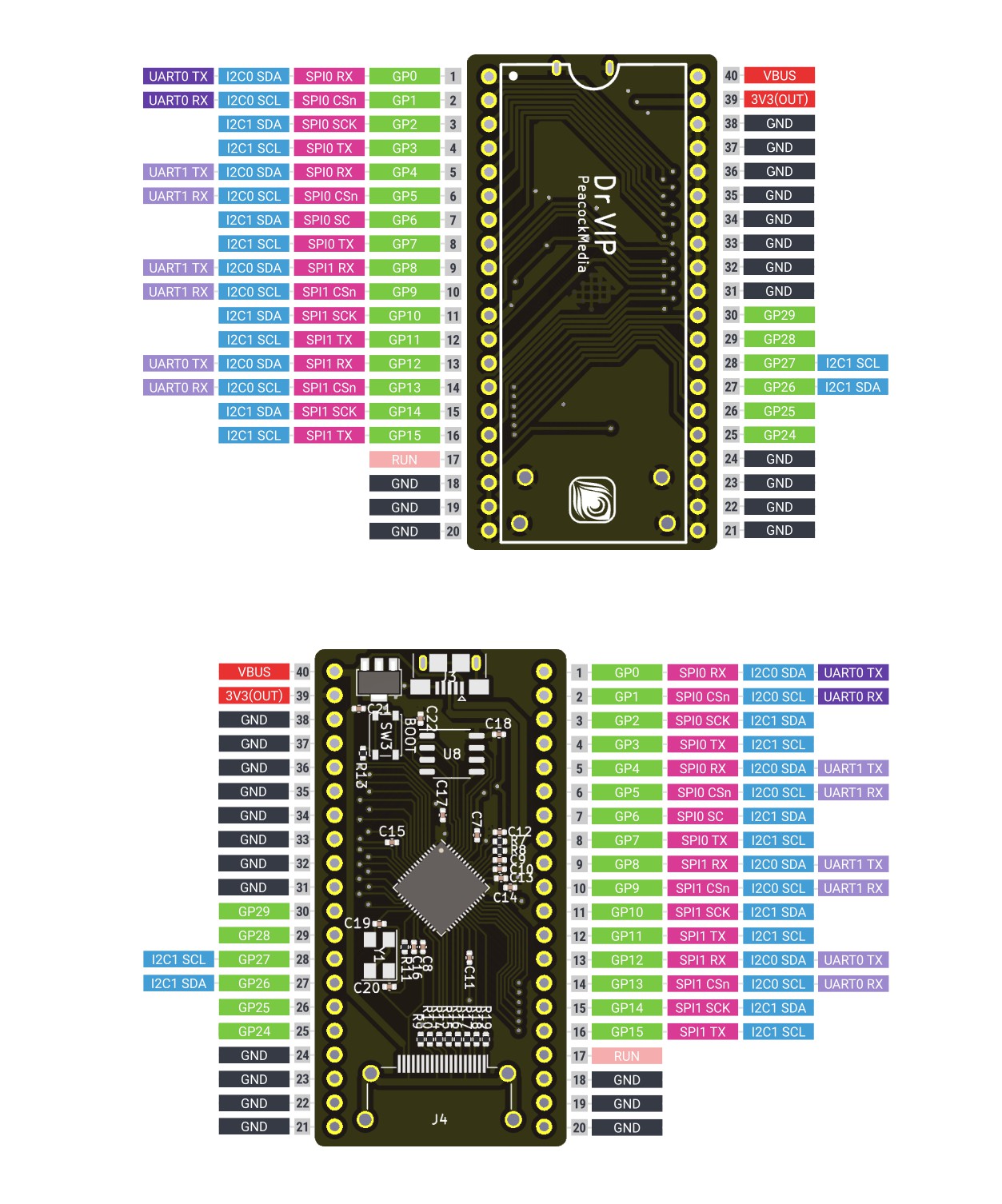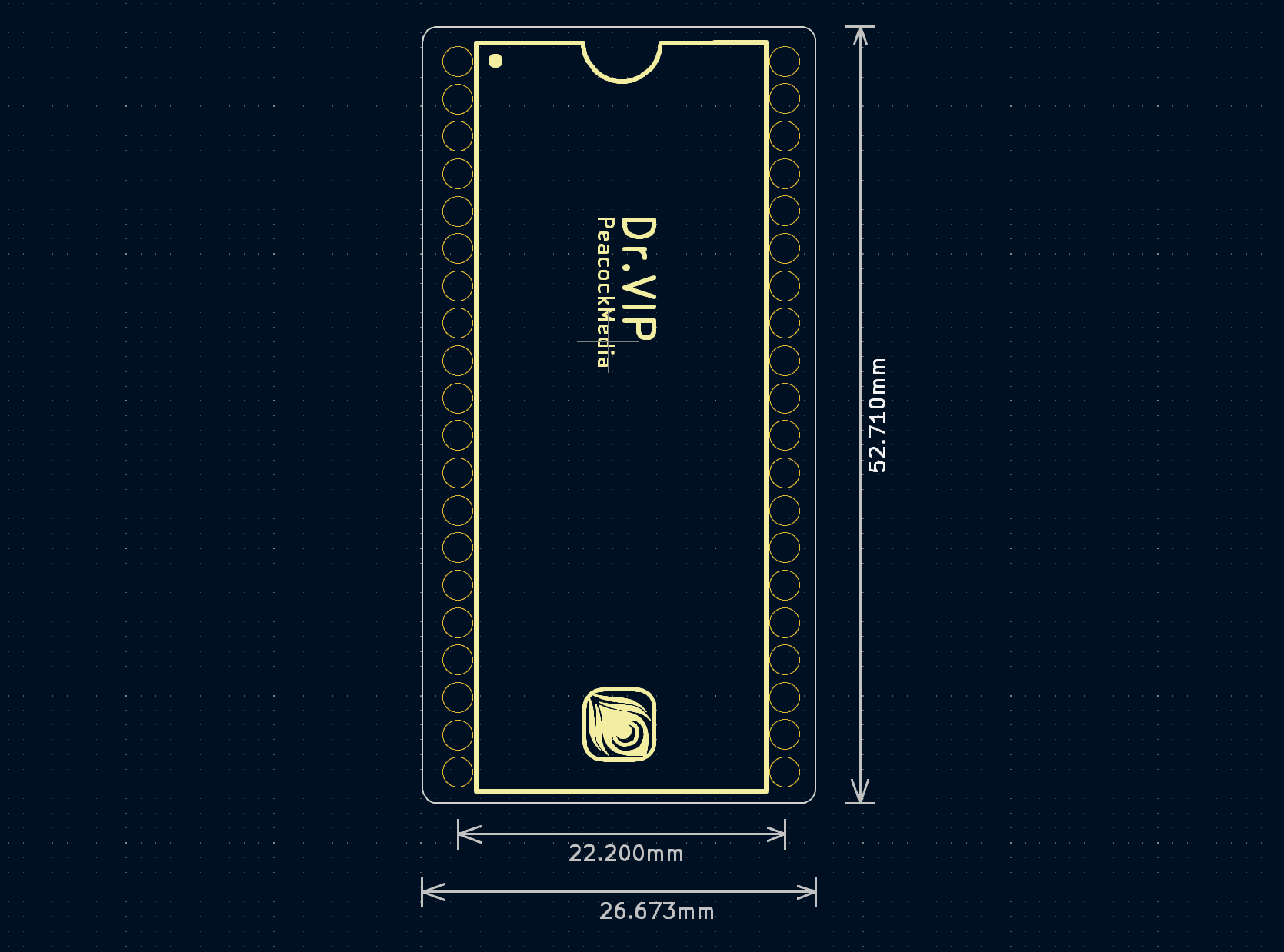Today these arrived and I'm very excited.

This is what I think of as the underside with the header pins soldered in.
I designed this because I needed:
- a RP2040 board with HDMI, sorry, DVI video out
- all of the GPIO broken out
- a DIP-style form factor, preferably black
The RP2040 Feather DVI almost met the spec but it's stingy with the number of GPIO it breaks out.
My reasons for going this 'daughterboard' route rather than putting the surface-mount components on my module's pcb are given in my TMSEMU project logs.
I'm sure that this will be useful to me in other projects and maybe to others.
First test, a quick 'hello world' to check that I could load and run a program

YAY! Next to test the HDMI, sorry, DVI out. This one of Adafruit's Feather DVI examples
YAY! again. Next test, do all of the GPIO work?
And YAY! again. Testing 6 at a time using my logic squid. This board breaks out all 30 GPIO, less the 8 that are used for HDMI, sorry, DVI. This is one big advantage over using VGA output which hogs a large proportion of the GPIO.
(I had one minor heart-stopping moment when GPIO29 didn't seem to be working, but that was a bug in my 'blinky' program. I forgot that 0-29 is actually 30 values!)
Note that this is not pin-compatible with a Pico. The pinout is similar but not the same. The row spacing is different too. Note also that this is bare-bones and designed to break out GPIO and add HDMI socket. This version doesn't, for example, have an LED on board, implement ADC_VREF or break out the SWD connections.
I've made a pinout chart, dimensions diagram and KiCAD symbol and footprint. You can easily download these under 'Files'.


Discussions
Become a Hackaday.io Member
Create an account to leave a comment. Already have an account? Log In.